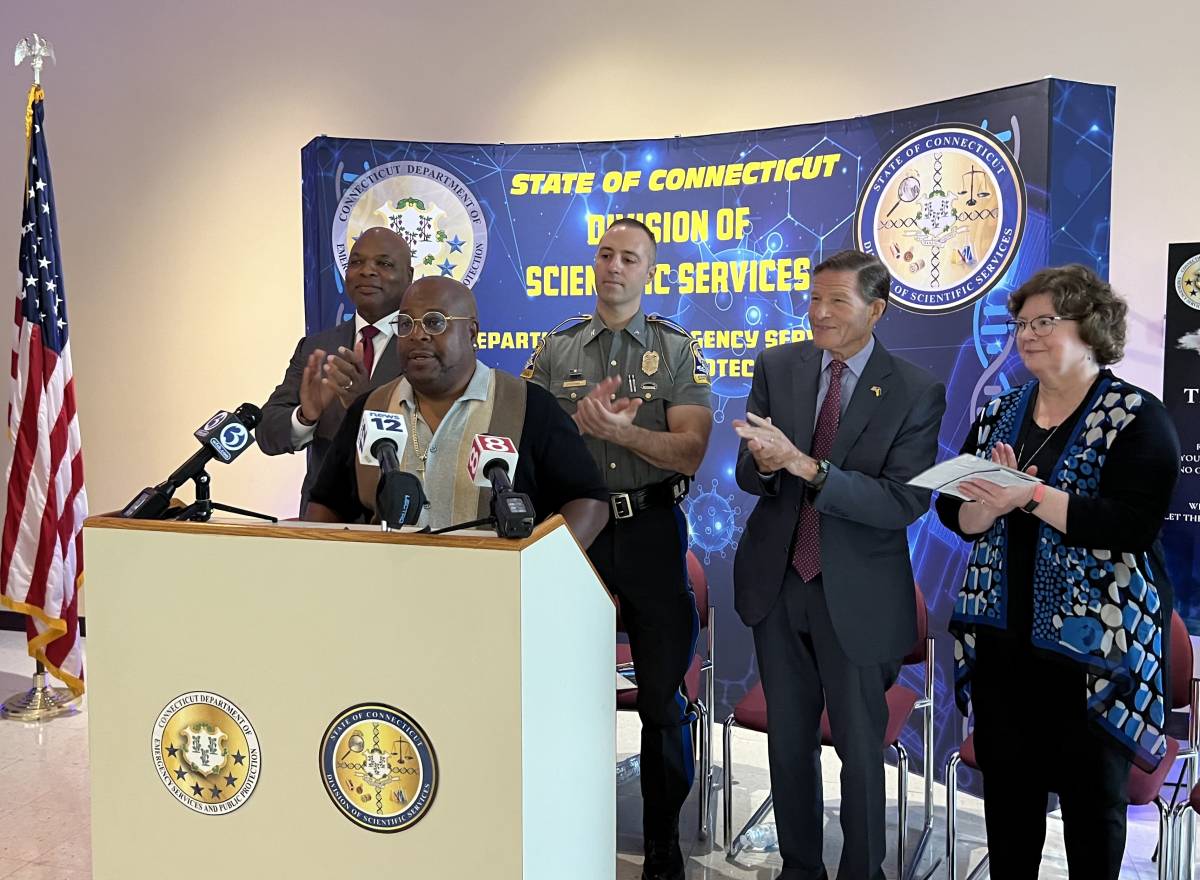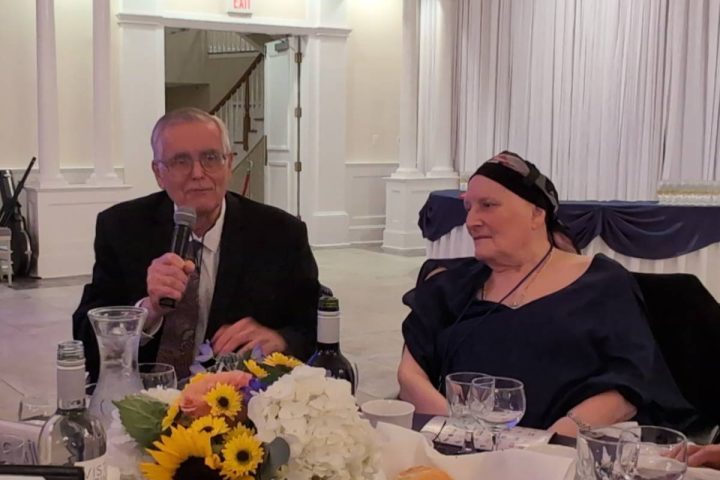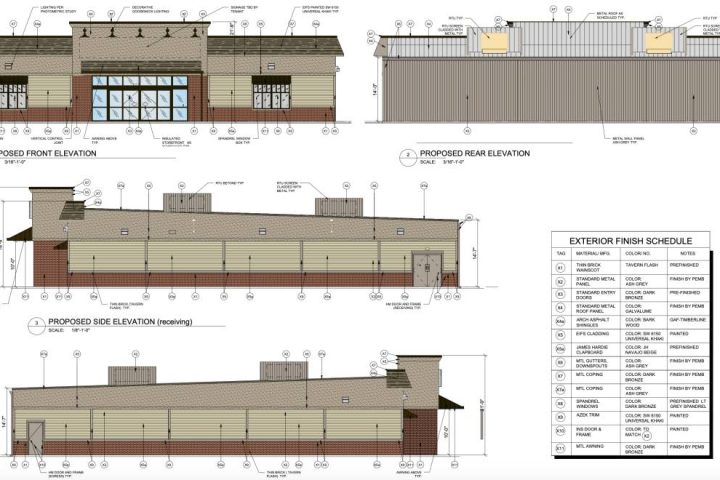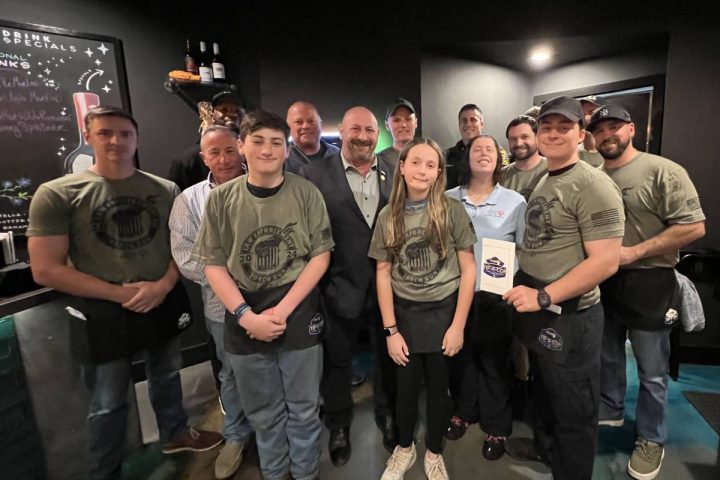MERIDEN, CT — Police departments throughout the state bring crime scene evidence to the Connecticut Forensic Science Laboratory in Meriden, whose experts use their knowledge to lift latent fingerprints, match bullets to murder weapons, uncover data from memory chips in electronics, identify drugs and alcohol in a suspect’s blood and urine samples, or find an incriminating DNA match.
Guided by science, these analysts work tirelessly to uncover the truth, whether the results point to one’s guilt or, as James C. Tillman learned, exonerates the innocent.
Thirty years ago, Tillman, 63, was wrongfully convicted of rape in Hartford. He spent 16 years of his life in prison, before the Connecticut Innocence Project took up his case and the Connecticut Forensic Science Laboratory determined his DNA was not a match.
He was among the guests at the crime lab’s first open house, held Friday morning during National Forensic Science Week.
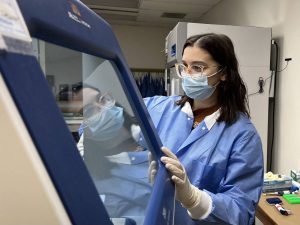
Tillman spoke at the podium during the opening ceremony, sharing his experience, which included four years in solitary confinement and a year in a cell with the lights on all day and night.
“I guess I lived a life unimaginable to some people, one that I try hard to forget,” he said. “But I endured, what seemed to me like it was hell on Earth — the violence, the long days and long nights. The food was nasty. It really was.”
“And I missed my life,” Tillman said, “and I didn’t get a chance to spend that time with my little brother, who passed away while I was in prison. That was the hardest part. I would do the time all over again just to have time with him.”
Tillman said he felt like a prisoner of war, his freedom taken away for a crime he did not commit. After 15 years went by, Tillman said he gave his life to Christ and let go of the hate he felt for the jury, the woman who accused him and the state of Connecticut, which locked him up.
Years of frustration and fruitless appeals had passed, when the Innocence Project took up his case. A series of setbacks in trying to find the old evidence ensued, but Tillman said usable samples finally made it to the lab in Meriden. Turning toward staff members seated against a sidewall, he added, “where all these beautiful people are sitting right here that I love.”
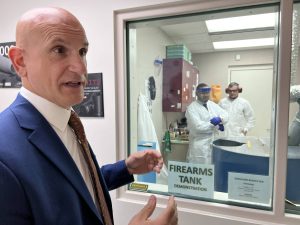
“I always wanted to come back here,” he said, “and this was on my bucket list to be here. This is where it all happened. This is where I got a new life. I got a wife. I got a house. I got a car. I graduated from college. This is where it all happened — right here.”
Tillman said he always wanted a child of his own, but he had met his wife late in life.
However, he was recently surprised to learn he has a 40-year-old biological daughter, who tracked him down using Ancestry.com. Her mother apologized to Tillman for never telling him about his daughter.
“We talked, and she said to me, ‘dad, I’m where I’m at today because of you,’ and I said, ‘I haven’t been in your life,’ and she said, ‘no dad, I have your DNA,'” Tillman recalled as the room erupted into laughter.
Jeremy M. Miller, scientific services administrative manager, served as the master of ceremonies at the event, which was attended by members of law enforcement, prosecutors, government officials and the media.
Other speakers included Ronnell A. Higgins, commissioner of the Department of Emergency Services and Public Protection, and U.S. Sen. Richard Blumenthal, D-Connecticut.
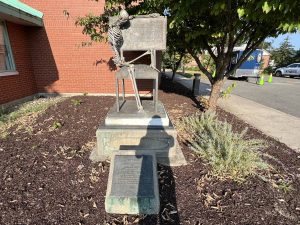
“The Witness statue outside the building reminds employees that the law has made them a witness,” Miller said, “to remain a person of science and let the evidence speak for itself. The responsibility of a forensic scientist is not to exculpate and inculpate. The evidence stands on its own.”
On behalf of Dr. Guy Vallero, director of the State Crime Lab, Miller thanked lab employees for their dedication to taking the State of Connecticut Division of Scientific Services to where it is today.
Higgins said a 12,000 case backlog, dating back to 2013, has been eliminated and turnaround time for evidence analysis has been reduced by years.
“We are providing rapid turnaround of DNA and ballistic evidence, opening the lab 24/7 to municipal police agencies through a system of statewide kiosks,” he said. “Improved technology has given investigators the opportunity to access locked cellphones, and folks, we are training K-9s to detect electronic devices here in the state of Connecticut.”
During tours of the facility, Connecticut State Police Detective David Aresco performed demonstrations with his K-9, Walter, an electronic storage detection dog.
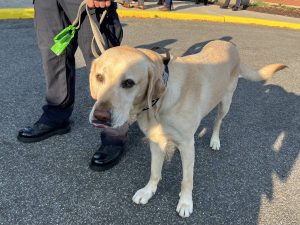
Walter, a five-year-old yellow lab, is named in honor of Trooper Walter Green, who died of complications after responding to rescue efforts on 9/11.
Aresco said Dr. Jack Hubbal, a chemist at the State Police Forensic Lab, was able to isolate a chemical compound which is found in phones and computers, just over a decade ago, so dogs could be trained to detect it and alert their handlers.
Michael Chaves, a longtime Monroe police detective, who was recently hired as a forensic science examiner 1 for Connecticut’s Computer Crimes Unit, said Walter had found a smashed laptop computer hidden between magazines, while working on a case in Monroe.
“We are using DNA and forensic genealogy to crack decades old cold cases,” Higgins said, “and ladies and gentlemen, let us not forget that it is our forensic scientists that testified and assisted in the state of Connecticut winning the Jennifer Dulos case.”
Higgins said the lab also earned a perfect accreditation score.
Blumenthal praised the dedication of staff at the Division of Scientific Services and said funding and resources are critical to their mission.
“I’ve just introduced a measure. It’s called the Renewed Hope Act,” Blumenthal said. “It will provide more resources to the Department of Homeland Security for forensics and scientists and analysts, so that they can identify the victims of child sexual abuse material. You need forensics to identify the victim and to analyze and to rescue them.”
“Your dedication inspires us to seek those resources and we’re very proud of the work you all do every day,” he said.
Ending injustice
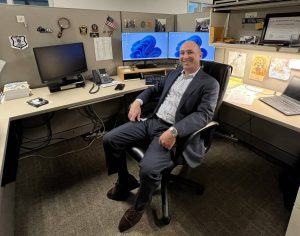
Higgins said he was honored to be in the presence of James C. Tillman, who he called a courageous man.
“I am heartbroken by the pain and injustice of this unimaginable story, which stands as a powerful law enforcement lesson for all of us,” Higgins said of Tillman’s incarceration. “But I am renewed by our belief and adherence to the highest of standards and the best science, as we work every day to analyze the evidence and provide the best investigative leads we can to Connecticut law enforcement officers.”
Blumenthal said, “when I first met Mr. Tillman, what struck me really was his grace, his dignity, his decency after an experience that would shatter most of us and make us embittered and angry. But the depth of his humanity has always inspired me.”
Blumenthal recalled a case from his days as a defense lawyer when he represented a man in Florida, who was wrongly convicted of murder and rape and sentenced to death.
“The FBI forensic analysis showed that the murder weapon couldn’t fire the bullets that killed the victim,” he said. “But the lawyer responsible for defending this innocent Black man, convicted by an all White jury after a five day trial, never used that evidence.”
“My client came close to death. His head was shaved. He had his last meal, before the United States Supreme Court stayed his execution,” Blumenthal recalled. “It took five years to show his innocence to the court.”
The senator expressed his optimism that DNA science can reduce the number of wrongful convictions. “Your dedication to this science, to DNA, to making sure that the system works as it should, is really so critically important,” he said.
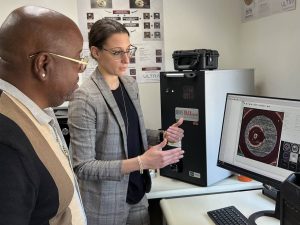
Cheryl Carreiro, deputy director of forensic biology and DNA, said only 10 human cells are needed for a DNA test.
“We are known worldwide for our Rapid DNA program,” she said. “We have under a 30 day turnaround for sexual assault cases. All other DNA cases are within 60 days.”
Tillman toured the facility in Meriden, which included Breathalyzer machines, Rapid DNA, ballistics testing, the use of liquid nitrogen and latent print processing among its many services.
“I think this is an amazing place,” Tillman said. “I’m very overwhelmed. This place is awesome. They cover all the bases. The staff is knowledgable and up to speed with technology. Without this place, I wouldn’t be talking to you right now. I love this place.”
All respectful comments with the commenter’s first and last name are welcome.

